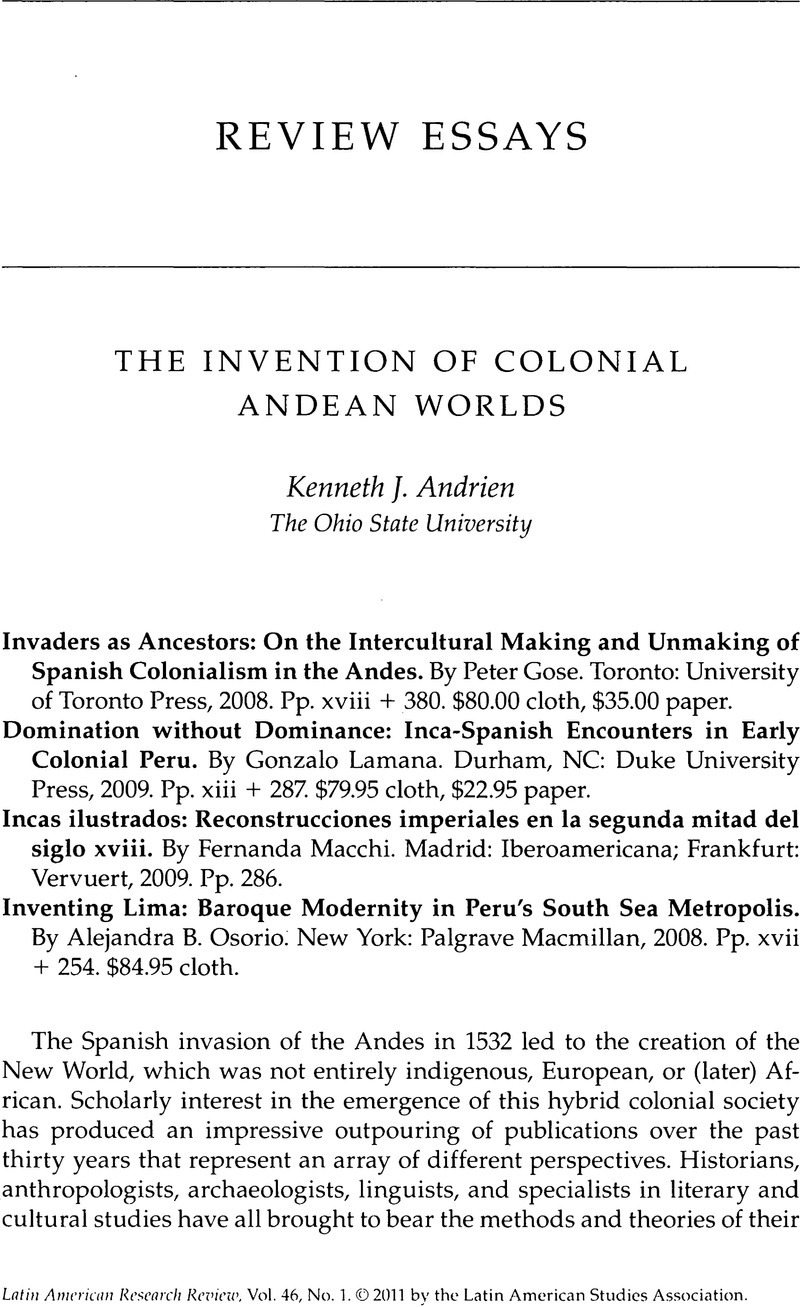Published online by Cambridge University Press: 05 September 2022

1. For the most strident revisionist opinion about the quipu, see Laura Laurencich Minelli, Exul immeritus Blas Valera populo suo e historia et rudimenta linguae piruanorum: Indios, gesuiti, e spagnoli in due documenti segreta sul Peru del XVII secolo (Bologna: Casa Editrice Clueb, 2007); for a recent rebuttal of this work, see Kenneth J. Andrien, “The Virtual and the Real: The Case of the Mysterious Documents from Naples,” History Compass 6, no. 5 (2008): 1304–1324.
2. As a corollary to this dearth of sources, Andean scholars do not have a rich body of mundane administrative documents in native languages akin to that which, in the case of New Spain, spawned the new philology, a school of historians (associated with James Lockhart and his students) who use such documentation as a window into colonial indigenous society. See Matthew Restall, “A History of the New Philology and the New Philology in History,” Latin American Research Review 38, no. 1 (2003): 113–134.
3. Matthew Restall, Seven Myths of the Spanish Conquest (New York: Oxford University Press, 2003), 108–130.
4. John F. Guilmartin Jr., “The Cutting Edge: An Analysis of the Spanish Invasion and Overthrow of the Inca Empire, 1532–1539,” in Transatlantic Encounters: Europeans and Andeans in the Sixteenth Century, ed. Kenneth J. Andrien and Rolena Adorno (Berkeley: University of California Press, 1991), 40–69. John Hemming, The Conquest of the Incas (New York: Harcourt Brace, 1970).
5. Kenneth Mills, Idolatry and Its Enemies: Colonial Andean Religion and Extirpation, 1640–1750 (Princeton, NJ: Princeton University Press, 1997); Nicholas Griffiths, The Cross and the Serpent: Religious Repression and Resurgence in Colonial Peru (Norman: University of Oklahoma Press, 1996); Juan Carlos Estenssoro Fuchs, Del paganismo a la santidad: La incorporación de los indios del Perú al catolicismo, 1532–1750 (Lima: Instituto Francés de Estudios Andinos, 2003).
6. Charles F. Walker, Shaky Colonialism: The 1746 Earthquake-Tsunami in Lima, Peru, and Its Long Aftermath (Durham, NC: Duke University Press, 2008).
7. Jorge Cañizares-Esguerra, How to Write a History of the New World: Historiographies, Espistemologies, and Identities in the Eighteenth-Century Atlantic World (Stanford, CA: Stanford University Press, 2001).